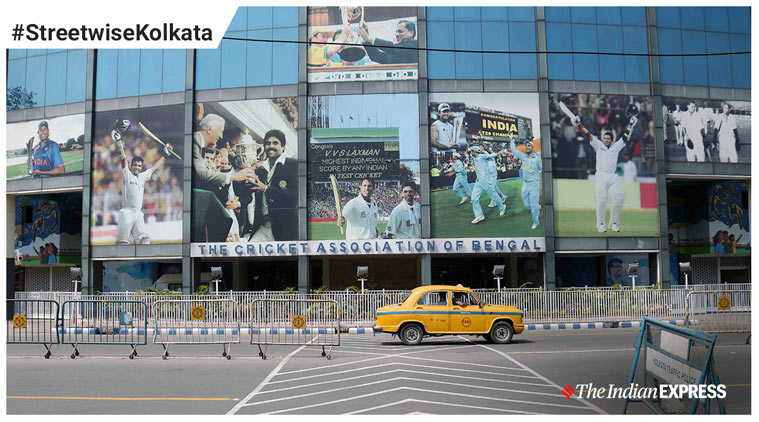 Exterior of Eden Gardens Stadium. (Express Photo by Shashi Ghosh)
Exterior of Eden Gardens Stadium. (Express Photo by Shashi Ghosh)
Till recently, Eden Gardens in Kolkata was the largest cricket stadium in India, till it was overtaken by Ahmedabad’s Motera. In a city with the famed football rivalry between Mohun Bagan and East Bengal, the country’s oldest cricket stadium has managed to hold its own, garnering a loyal fan base that flocks to its gates for every match.
Directly in front of this cricket stadium is a stretch of road named Eden Garden Road after the iconic stadium. This road officially starts at the offices of the All India Radio building, situated close to the stadium, and ends at the footsteps of Babughat on Strand Road.
Sometime in the 1960s, when the Left Front government was in power, this road’s name was changed to Gostha Pal Sarani, to commemorate the legendary Indian football player Gostha Pal. Pal captained Mohun Bagan as well as the Indian national team before his retirement in 1935. In April 1962, he was awarded the Padma Shri, the only Indian footballer to have received this honour.
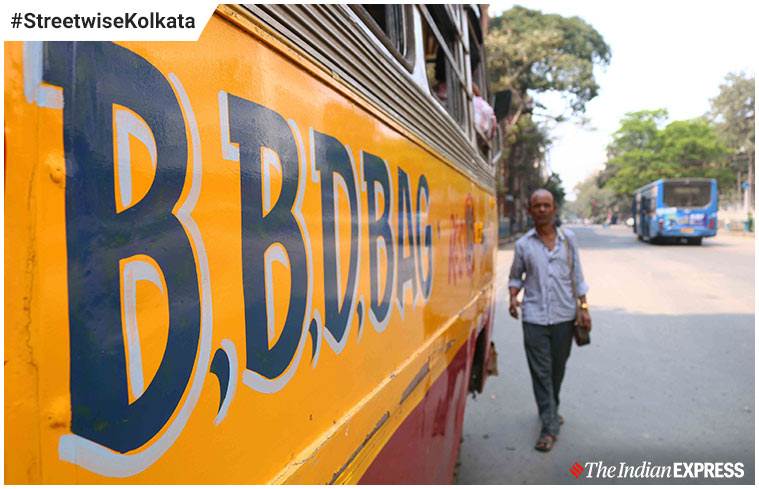 B.B.D. Bagh street sign. (Express Photo by Shashi Ghosh)
B.B.D. Bagh street sign. (Express Photo by Shashi Ghosh)
Eight years after his death, in 1984, his statue was erected where the extended property of Eden Gardens meets the Mohun Bagan grounds.
Written records show that the stadium at Eden Gardens and the road that runs past were named after members of the very wealthy and influential Eden family, descendants of the 1st Baron Auckland, William Eden, who found themselves in India in the employ of the British Indian government.
When Willian Eden’s son, George, who was later given the earldom of Auckland, was appointed Governor-General of India in 1836, the family’s prominence rose even further.
The new Governor-General had a tenure that lasted seven years in the Indian subcontinent. During this period, Eden’s sisters, Emily and Frances, travelled around the region, making use of the extraordinary access and opportunities that their brother’s position provided them.
 Street scenes outside Eden Gradens. (Express Photo by Shashi Ghosh)
Street scenes outside Eden Gradens. (Express Photo by Shashi Ghosh)
According to the scant details available in the archives of Eden Gardens stadium, it is believed that the grounds and the road outside were named after the two Eden sisters. However, in the writings of Emily Eden, there is no mention of the cricket grounds itself. A prolific writer, Emily wrote several letters to her family in England on her travels across the northern parts of the subcontinent. These were later published in a collection titled, ‘Up The Country: Letters Written to Her Sister from the Upper Provinces of India’. Her sister Frances also wrote several journals during her stay and travels across the subcontinent, that were later published under the title ‘Tigers, Durbars and Kings: Fanny Eden’s Indian Journals, 1837-1838’.
Neither is the ground nor the street mentioned in the obituary of George Eden, published in volume 31 of an issue of ‘The Gentleman’s Magazine’ in 1849. Hence, the naming may have come about due to the practice of properties taking the name of prominent British administrators in the subcontinent, commonplace during that time.
Several bloggers and walking tour organisers in the city attribute the origins of the cricket ground’s name to various other sources and circumstances, but there is no corroboration available.
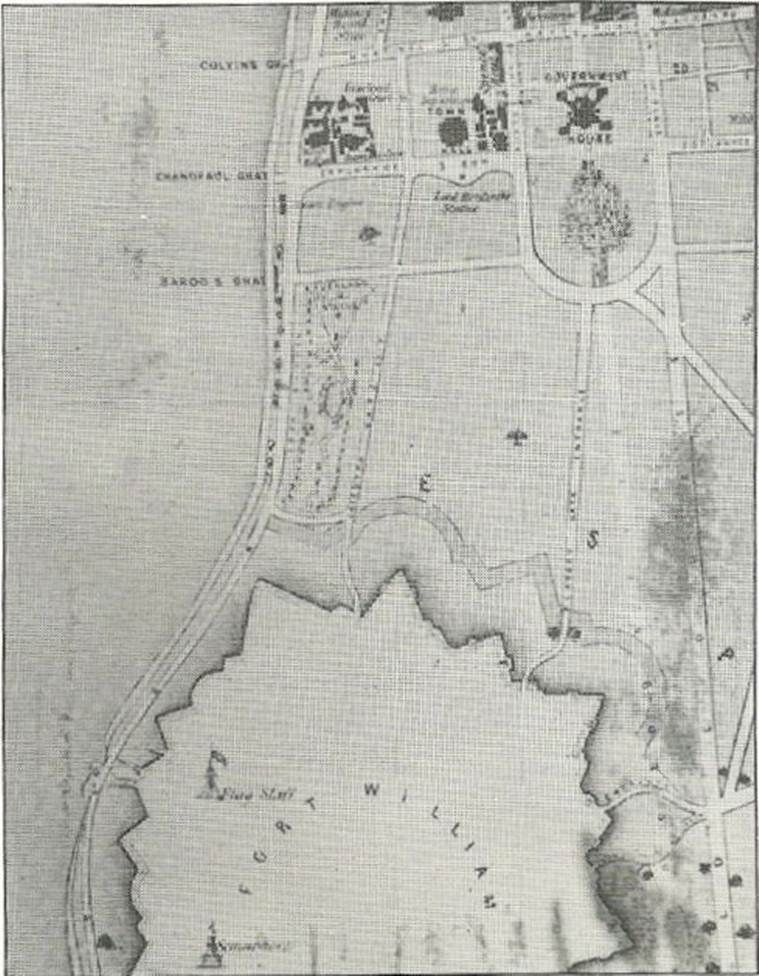 A map of the Maidan in Calcutta in 1854. Eden Gardens came to be established on the ground between Fort William and Baboo Ghat. (Photo: The Cricket Association of Bengal)
A map of the Maidan in Calcutta in 1854. Eden Gardens came to be established on the ground between Fort William and Baboo Ghat. (Photo: The Cricket Association of Bengal)
The origins of the cricket grounds at Eden Gardens can be traced to when the sport first arrived here with the British. Although it is not clear when cricket first started in the subcontinent, Raju Mukherji, cricketer and author of the book ‘Eden Gardens: Legend and Romance’, believes it can be traced to 1780 in Calcutta, with the establishment of the first cricket club that went on to be known as the Calcutta Cricket Club.
When the sport first began to be played in 1780, Calcutta was still a developing city. Large tracts of forest that the British had cleared for settlement came to be known as the open grounds of the Maidan area. These unencumbered grounds provided the British the required space to play the sport. Also, these were in close proximity to the neighbourhoods of Park Street and Chowringhee, frequented by East India Company employees.
One of the earliest mentions of this cricket club is in Emily Eden’s ‘Letters from India’, where she writes: “Charles cameron is just as fond of cricket as he was in Eden Farm days, and he and Sir E. Ryan (the Chief Justice) have established a cricket club, and when we drove through their gardens the Calcutta Eleven were playing the officers of the ‘Jupiter’ and the ‘Hyacinthe’. It looked pretty and English and brought back visions of Prince’s Plain.”
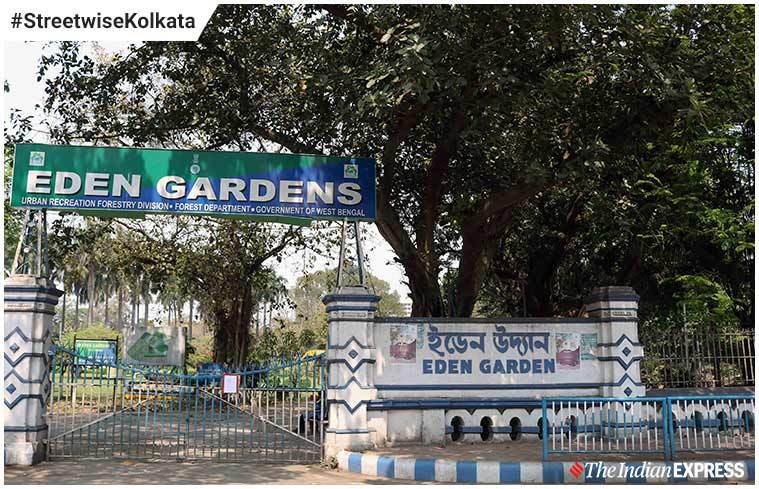 Eden garden Park beside Eden Garden Stadium. (Express Photo by Shashi Ghosh)
Eden garden Park beside Eden Garden Stadium. (Express Photo by Shashi Ghosh)
Although the original ownership of the land on which the cricket grounds now stand is disputed, it is likely that it was once owned by wealthy zamindars of the village of Gobindapur, which was combined with the villages of Kalikata and Sutanuti by Job Charnock in 1686 to create Calcutta. The zamindars, forced to leave their land, were compensated handsomely to settle in other parts of the city, and the property came under the control of the East India Company.
Thick patches of the forest land that is now the Maidan were cleared away for the developing neighbourhoods of Chowringhee, Esplanade and its environs. On the other side of this forest land was the Hooghly riverfront, called the Strand Bank, where the English enjoyed walks along the promenade.
Around 1840, the then Governor-General of India, George Auckland, proposed to create a public park in order to “improve aspects of the town” and for the “health, convenience and comfort of the public.” There is no mention of whether this park was open to Indians. The park was first named ‘Auckland Circus Gardens’ after the man who commissioned it. By 1854, it was renamed Eden Gardens, but it is not known whether it was so named after the Governor-General or his two sisters.
Records show that the Calcutta Cricket Club moved into the formal grounds of what came to be known as Eden Gardens in April 1846. By 1863, large parts of the Maidan area were cleared for the construction of Fort William, and it appears from records that portions of the Eden Gardens, that were not as clearly defined as they are today, were consumed during the development and expansion of the fort’s land.
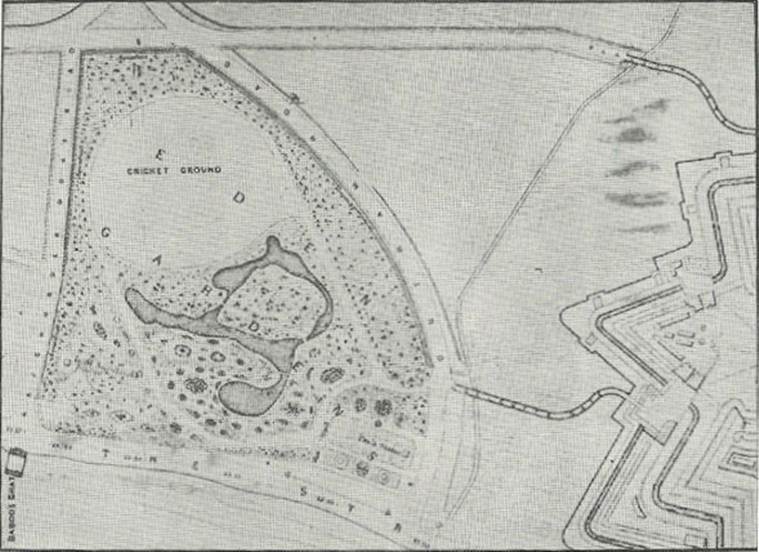 A map of Eden Gardens showing the cricket grounds in 1875.(Photo: The Cricket Association of Bengal)
A map of Eden Gardens showing the cricket grounds in 1875.(Photo: The Cricket Association of Bengal)
Calcutta’s weather of hot summers and rainy monsoons meant that although the ground of Eden Gardens had been prepared for matches, it was impossible for the British to play in what they considered inclement weather. Naturally, they waited for the arrival of autumn, and the first match at Eden Gardens was played in the last week of October in 1863.
Not everyone within the British administration was pleased with the development of the park or the cricket ground at Eden Gardens. Military officials at Fort William believed that the proximity of the recreation space threatened the security of the fort.
In November 1862, the Brigadier-General St. G D Showers, CB, Commanding Presidency Division, wrote to the Quartermaster General of the Army Headquarters, Presidency Division: “Sir…It is the open space which is preserved, as a general rule round forts as a military precaution….The Eden Gardens is also formed against military rule; but there is no objection to this as long as its original purpose of maintaining it as a shrubbery is adhered to and large trees are not planted. To this day, the grounds around Eden Gardens are relatively sparsely planted with large trees and the arrangement is more grounded in military strategy than may appear.”
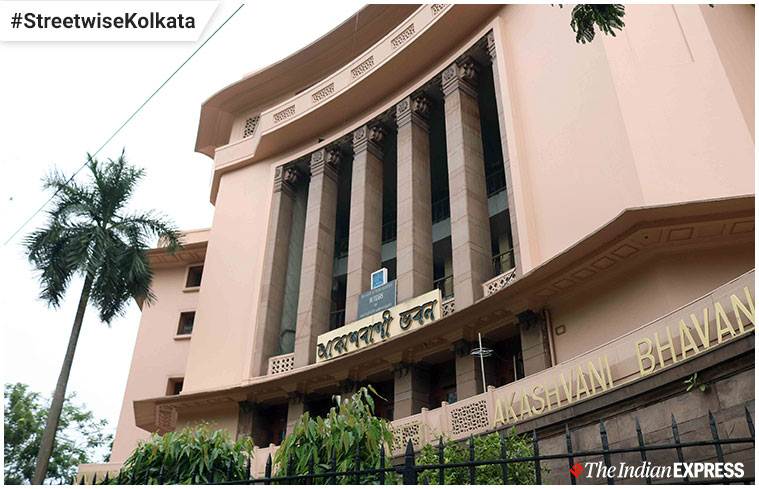 All India Radio office outside. (Express Photo by Shashi Ghosh)
All India Radio office outside. (Express Photo by Shashi Ghosh)
While the maintenance of Eden Gardens was originally under the direction of the Town Major, by 1854, it had been transferred to the authorities overseeing the Royal Botanic Garden.
The famed pagoda in Eden Gardens today was the handiwork of Lord Dalhousie, who had been so fascinated with the pagodas he saw during his visit to Burma that he insisted on having one in Calcutta. Eden Gardens was chosen as the site for this installation, although it is not clear why. In 1856, Burmese craftsmen installed this pagoda.
The park and the cricket ground were very much the domain of the British, and there were strict dress codes in place for their jaunts, perhaps in an attempt to replicate those in effect for walks around the Serpentine in London.
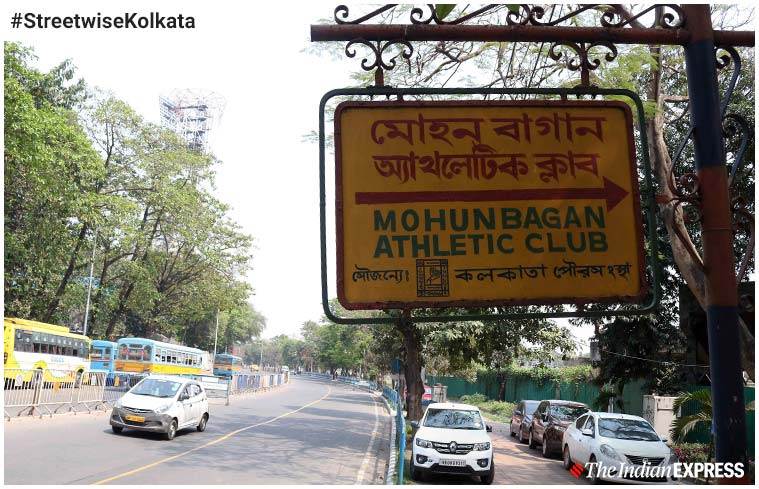 Eden Gardens road. (Express Photo by Shashi Ghosh)
Eden Gardens road. (Express Photo by Shashi Ghosh)
By 1863, roads around Eden Gardens were subjected to improvisation and closures, specifically those linking the nearby Calcutta High Court, the Governor’s House. A road was constructed to connect the Governor’s House to the Strand by the Hooghly, that ran just outside the grounds of Eden Gardens, and was named Kingsway. Sometime later, it acquired the nomenclature after its namesake — Eden Gardens Road — but there is no clear indication of when this change occurred.
The facade of the Eden Gardens stadium has undergone several transformations and now has large posters of icons of Indian cricket. Just a few minutes from the stadium is the recreational park commissioned by the British, now accessible to everyone and simply known as ‘Eden Gardens’.
A few meters from the stadium is the Eden Gardens railway station, that serves the Kolkata Circular line of the Kolkata Suburban Railway with only one platform. The neighbourhood of BBD Bagh being the commercial centre of the city ensures the road receives a steady flow of traffic. Despite its heritage and iconic status, little is left of the original structure of Eden Gardens and its environs.